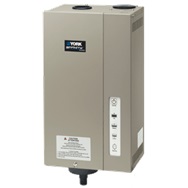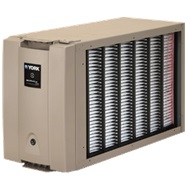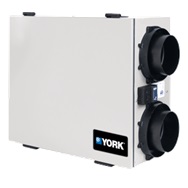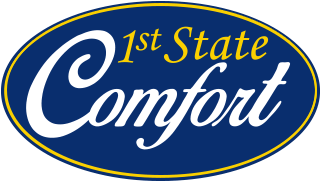Indoor air quality is an important factor to consider for the health and comfort of your home. During the winter when your home is shut tightly to save money and stay warm, humidity levels drop and toxins can build up inside that affect the health of your family. VOCs from paints, cleaning products, carpets and even your bed are absorbed by your body. Allergens, bacteria, microbial growths and pet dander also make their way into the air with no way out.
1st State Comfort can install indoor air quality products that filter, refresh, protect and humidify your indoor air. You'll have a more comfortable, healthier home. Learn more by calling us at (302) 381-5664.
Humidification
 The temperature and resulting comfort level in your home is directly affected by the amount of humidity in the air. When air is heated, the “relative humidity” drops and results in static shocks, cracked woodwork and even respiratory issues. Insufficient humidity also makes you feel colder, tempting you to turn the thermostat higher than necessary. A humidifier delivers comforting humidity and eliminates all the results of extremely dry air.
The temperature and resulting comfort level in your home is directly affected by the amount of humidity in the air. When air is heated, the “relative humidity” drops and results in static shocks, cracked woodwork and even respiratory issues. Insufficient humidity also makes you feel colder, tempting you to turn the thermostat higher than necessary. A humidifier delivers comforting humidity and eliminates all the results of extremely dry air.
Healthier air for a healthier family. Bacteria, viruses and respiratory infections are more abundant in very dry conditions. That’s why it’s so important to maintain proper levels of humidity, to avoid an overly dry environment —which puts you and your family at a significantly higher risk of infection.
See savings you’ll be comfortable with. It’s been proven that lower temperatures with proper humidity levels are more comfortable than, for example, dry air with a temperature that is 3 degrees higher. So let your humidifier add the necessary moisture and reduce your thermostat setting by 3 degrees to save as much as 5% on your heating bill.
Protect your precious furnishings. Properly humidified air will protect valuables like fine art, musical instruments, leather and precious antiques. It also keeps wooden floors and the woodwork around doors and windows from cracking.
Air Filtration
 Heat pumps, air conditioners and furnaces are always installed with an air filter. They are there to protect the motors, coils and heat exchangers. They don’t do much for the human respiratory system.
Heat pumps, air conditioners and furnaces are always installed with an air filter. They are there to protect the motors, coils and heat exchangers. They don’t do much for the human respiratory system.
The air that we breath is polluted with small particles not visible the naked eye. They include fibers, dust, mold spores, smoke, bacteria, etc. The particles all have shape and size which are gauged in the air as PPM (Parts Per Million). To capture these small particles a more efficient air filter must be used. Media air filters now have MERV (Minimum Efficiency Reporting Value) ratings which describe how effective they are at removing particulates.
Filters with MERV ratings below 8 are the type to protect your HVAC equipment by collecting dust and fibers. As the MERV ratings increase smaller particles are captured. MERV 16-20 air filtration is a level used in surgical rooms and clean rooms.
Air filters rated between MERV 8-15 are best to protect your lungs. One precaution in selecting a more efficient air filter. The fan motor in your HVAC system is design to work under a limited pressure. As air filters increase in MERV’s so does the resistance to air passing through it which increases pressure on the fan. Too much pressure can shorten the life of the motor, use more energy and can possibly wreak havoc on the compressor as well.
Give us a call if you have concerns about the quality and type of air filter you use in your HVAC system at 302-381-5664.
Ultraviolet Lamps
 A clean coil means more efficient cooling & heating. Ultraviolet (UV) lamps can be mounted in your coil to kill the microbial growth that can easily grow. Call 1st State Comfort for any indoor coil related needs, from new equipment to cleaning to UV lamp microbial growth protection.
A clean coil means more efficient cooling & heating. Ultraviolet (UV) lamps can be mounted in your coil to kill the microbial growth that can easily grow. Call 1st State Comfort for any indoor coil related needs, from new equipment to cleaning to UV lamp microbial growth protection.
ERV (Energy Recovery Ventilators)
 Homes now are built air-tight for energy efficiency and comfort. The result is that natural air infiltration rates are often too low to provide acceptable indoor air quality. The solution is to use an ERV to remove gaseous pollutants such as odors, winter-time excess humidity, formaldehyde, smoke, radon, vapors from cleaning products, and other chemicals. The removal of dust and other small particles from your home is not the function of an ERV.
Homes now are built air-tight for energy efficiency and comfort. The result is that natural air infiltration rates are often too low to provide acceptable indoor air quality. The solution is to use an ERV to remove gaseous pollutants such as odors, winter-time excess humidity, formaldehyde, smoke, radon, vapors from cleaning products, and other chemicals. The removal of dust and other small particles from your home is not the function of an ERV.
ERV operate when windows are closed and you need to ventilate. When the outdoor air is warmer or cooler than comfortable, the ERV will allow a quieter, more secure home with the windows closed and will also save energy.
An ERV works very well with air-conditioning, because its “enthalpy-transfer” energy-exchange core will reduce the amount of moisture in the outside air that is brought in. ERVs are the preferred way to ventilate while air-conditioning because it brings in less moisture than any other ventilation method.
Different households require different rates of ventilation, depending on the pollutants found in each home. The American Society of Heating, Refrigeration and Air-Conditioning Engineers (ASHRAE) recommends a daily average of 0.35 Air changes per hour (ACH) for your entire home. According to ASHRAE, this ventilation rate will provide good air quality in most homes for most people. At this rate, you will be changing the air in your home over eight times per hour.
These guidelines are a starting point. As long as the pollutants you are concerned with are detectable (like water vapor or odors) your nose can be a good guide, and you may find that fewer hours of operation will be sufficient.


